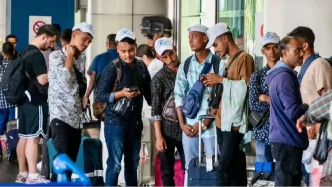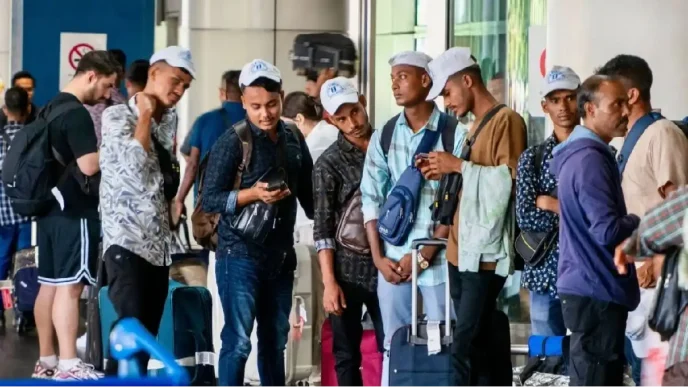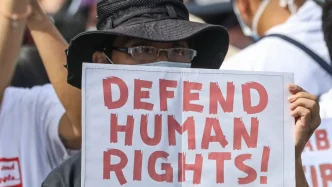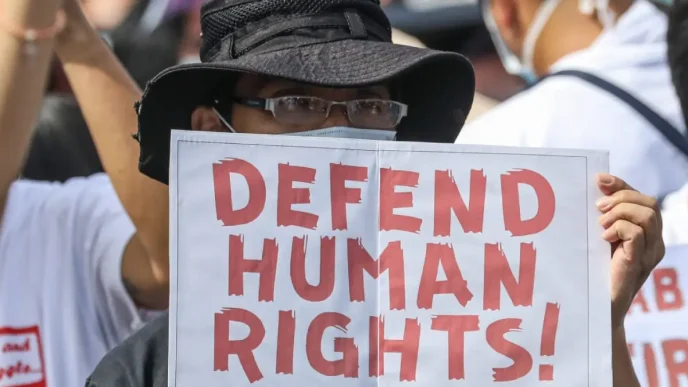Thailand’s Tourism and Sports Ministry is considering a significant reduction in the visa extension period for Chinese visitors, proposing to shorten it from 90 days to 30 days to better align with typical travel durations. The move, which comes under a mutual visa exemption agreement with China, has sparked discussions about its broader implications for tourism and border control.
Adjusting Visa Policies to Reflect Travel Patterns
On March 28, 2025, Tourism and Sports Minister Sorawong Thienthong announced that the current 90-day visa extension for Chinese tourists is deemed excessive, as the average stay for these visitors is less than 15 days. Speaking in Bangkok, Sorawong emphasized that the proposed reduction aims to mirror actual travel patterns rather than target specific issues. “This will, however, not apply to those who enter the country to study soft power subjects, such as Muay Thai or Thai cooking” he clarified, highlighting exceptions for cultural exchange programs.
The visa policy in question stems from a mutual exemption agreement between Thailand and China, effective since March 1, 2024. Under this arrangement, citizens of both nations can enter visa-free for an initial 30 days and extend their stay up to 90 days within a 180-day period. The proposed change, which has been discussed with the Foreign Ministry, is set to be presented to the Thai Cabinet for approval in the coming weeks. While the adjustment appears technical, it reflects a broader effort to fine-tune policies amid Thailand’s push to bolster its tourism sector, a key driver of the national economy.
Addressing Speculation on Illegal Business Operations
Speculation has arisen that the visa reduction might be linked to concerns over illegal Chinese business operators in Thailand, a topic that has periodically surfaced in public discourse. When questioned on this matter, Sorawong explicitly denied that the policy targets such issues. However, he acknowledged that the change might indirectly help mitigate related challenges. “The focus is on aligning visa durations with travel behavior, not on addressing specific enforcement concerns” he stated during the press briefing.
While the minister’s remarks aim to dispel assumptions, the potential overlap between visa policy and border control remains a point of interest. Thailand has long grappled with balancing its open-door tourism policies with the need to regulate foreign business activities. If confirmed, the visa reduction could serve as a subtle tool to monitor short-term stays more closely, though no official data or evidence has been presented to suggest a direct correlation with curbing illegal operations.
Boosting Domestic Tourism with New Initiatives
Beyond visa adjustments, the Tourism and Sports Ministry is also rolling out the next phase of the “Rao Tiew Duay Kan” (We Travel Together) campaign, a travel subsidy program designed to stimulate domestic tourism. According to Sorawong, the initiative targets secondary provinces and aims to encourage travel during weekdays and the low season. “We want to launch this campaign in the next low season, which will be after Songkran in May or June” he noted, adding that details of the government subsidy have been coordinated with the Finance Ministry.
A notable feature of the campaign includes incentives for civil servants, such as counting work-related travel days as work days rather than leave days. This measure is intended to boost interprovincial travel and support local economies in less-visited regions. The program builds on previous iterations of “We Travel Together,” which offered co-payment subsidies for accommodations and flights to revitalize tourism following pandemic-related downturns. With Thailand’s tourism sector contributing significantly to GDP—accounting for roughly 12-15% in pre-COVID years—such initiatives are critical for sustaining economic recovery.
Economic Implications of Visa and Tourism Policies
The proposed visa reduction for Chinese tourists arrives at a pivotal moment for Thailand’s tourism industry. China remains one of the largest sources of international visitors to the kingdom, with millions arriving annually before the global health crisis disrupted travel patterns. In 2019, Chinese tourists accounted for nearly 11 million of Thailand’s 40 million foreign arrivals, generating substantial revenue for hospitality, retail, and service sectors. While numbers have yet to fully rebound, the mutual visa exemption agreement has been a cornerstone of efforts to lure back this vital demographic.
Shortening the extension period to 30 days could have mixed effects. On one hand, it may streamline administrative processes and reduce instances of overstays or misuse of tourist visas for non-tourism purposes. On the other hand, it risks deterring longer-term visitors who contribute to sustained spending, particularly in cultural hubs like Bangkok, Chiang Mai, and Phuket. Tourism operators and small businesses, already navigating inflationary pressures and fluctuating visitor numbers, may face uncertainty if the policy is perceived as less welcoming.
Moreover, the timing of the visa proposal alongside the “We Travel Together” campaign suggests a dual strategy: tightening controls on international arrivals while incentivizing domestic movement. This balance is crucial for Thailand, where tourism revenue must be sustained without over-reliance on any single market. The government’s focus on secondary provinces also signals an intent to distribute economic benefits more evenly, addressing longstanding disparities between urban centers and rural areas.
Public and Industry Reactions
Reactions to the visa proposal have been varied, though comprehensive feedback remains limited at this early stage. Some industry stakeholders, particularly in the hospitality sector, express cautious optimism that aligning visa durations with actual stays could simplify operations. Others, however, worry about the signal it sends to international markets. A Bangkok-based hotel manager, speaking anonymously, remarked, “Chinese tourists are a huge part of our business. Any policy that seems restrictive might make them choose other destinations like Vietnam or Malaysia.”
On social media platforms like X, sentiment among Thai users appears mixed, with some praising the government’s focus on data-driven policy while others question whether the change addresses deeper structural issues in tourism management. Public opinion will likely crystallize once the Cabinet deliberates and more details emerge about implementation and exemptions.
Regional Context and Comparative Policies
Thailand’s visa policy review does not occur in isolation. Across Southeast Asia, countries are recalibrating entry rules to optimize tourism while safeguarding national interests. Vietnam, for instance, has expanded e-visa access for multiple nationalities, including Chinese citizens, allowing stays of up to 30 days with potential extensions. Malaysia, too, has introduced visa-free entry for Chinese tourists for short durations as part of its economic recovery strategy. Against this backdrop, Thailand’s proposed reduction could position it as more conservative, potentially influencing traveler preferences in a highly competitive region.
Additionally, the emphasis on soft power subjects like Muay Thai and Thai cooking as exceptions to the visa cut underscores Thailand’s unique approach to cultural diplomacy. By preserving longer stays for those engaging in such programs, the government signals a commitment to promoting national heritage—a tactic that aligns with broader regional trends of leveraging culture to attract visitors.
Looking Ahead: Challenges and Opportunities
As Thailand navigates these policy shifts, several questions linger about their long-term impact. Will the visa reduction for Chinese tourists achieve its intended administrative goals without dampening arrivals? Can the “We Travel Together” campaign successfully redistribute tourism benefits to secondary provinces, easing pressure on overtouristed areas? And how will the government balance openness with oversight in an era of heightened global mobility?
For now, stakeholders await the Cabinet’s decision on the visa proposal and further clarity on the travel subsidy rollout. With the low season approaching after the Songkran festival in April, the coming months will test Thailand’s ability to adapt its tourism framework to evolving realities. As these policies unfold, their success may well hinge on striking the right chord between pragmatism and hospitality—a challenge that has defined the kingdom’s appeal for decades.














